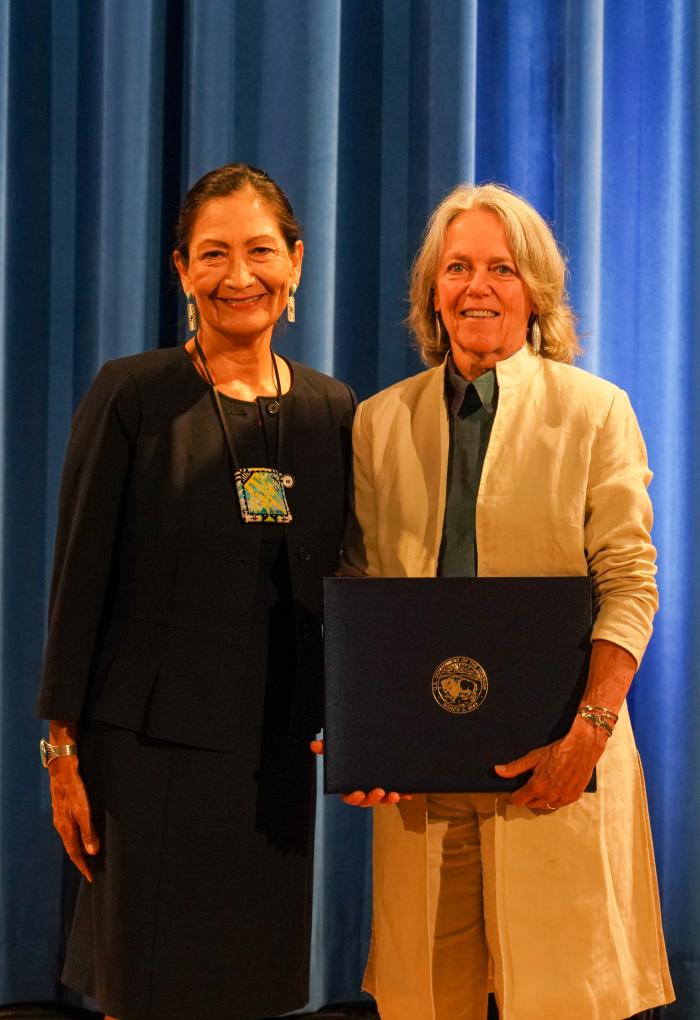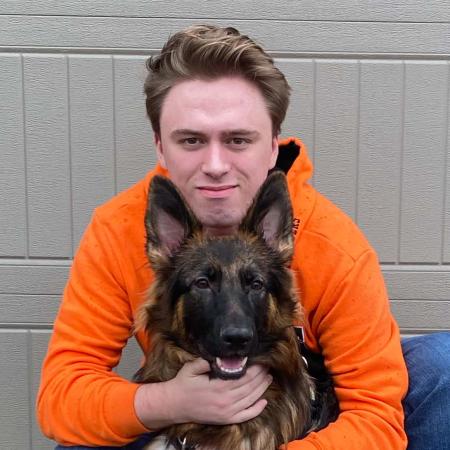Research statistician emerita and alumna Manuela Huso (M.S., 88’) received the highest honorary recognition an employee can receive within the U.S. Department of the Interior.
She awarded the Distinguished Service Award last fall for her “significant and highly impactful advancements in biological statistics and wildlife conservation ecology.”
Huso led the creation of statistically robust estimators of wildlife fatalities associated with wind-energy development while accounting for uncertainty in how impacts of turbine collisions are monitored.
To make these tools accessible to everyone, she put the software into packages for public use. Those programs, GenEst and Evidence of Absence, are now often required by the U.S. Fish and Wildlife Service as part of their permitting process for incidental take of wildlife at wind-energy facilities.
“It feels really good that I’ve been able to provide something that can be used by a lot of people. Whether you’re in a rich country or poor, it’s still accessible. And you don’t have to be a statistician,” she said. “It’s not a black box. That’s very important to my philosophy that whatever we do, anybody can look at the code and see what we’ve done and modify it for their own purposes.”
Huso’s passion for creating useful tools for scientists and industry started long before her work for the U.S. Geological Survey.
‘Statistically fascinating’
After graduating from Whitman College in Walla Walla, Washington, with a B.A. in Biology in 1978, Huso joined the Peace Corps.
Working as a forestry volunteer in Burkina Faso, located in West Africa, her experience was “life-changing.”
“There were incredible highs and pretty deep lows. It was an amazing opportunity to be in a part of the world and live a lifestyle that I would not otherwise have had a chance to do and work with people who were dedicated to their homes and doing the right thing for their place in the world,” she said.
During her free time, she started to think about opportunities that would combine her interests in mathematics and biology.
After the Peace Corps, she attended the University of Oregon and received her master’s in theoretical ecology, which she thought was the perfect fit. However, after entering the job market she realized her skills in statistics were worth more.
Oregon State Professor of statistics Fred Ramsey (now Emeritus) took Huso on as a student and she graduated in 1988 with a master’s in statistics. He asked her to do a Ph.D. but she declined, wanting to work in the field before making a long-term commitment.
“I went off and took a job with Oregon State in the Forest Science Department working on an acid rain project funded by the EPA,” she said. “And there I discovered that I really did like working in statistics. It was a lot of fun.”




